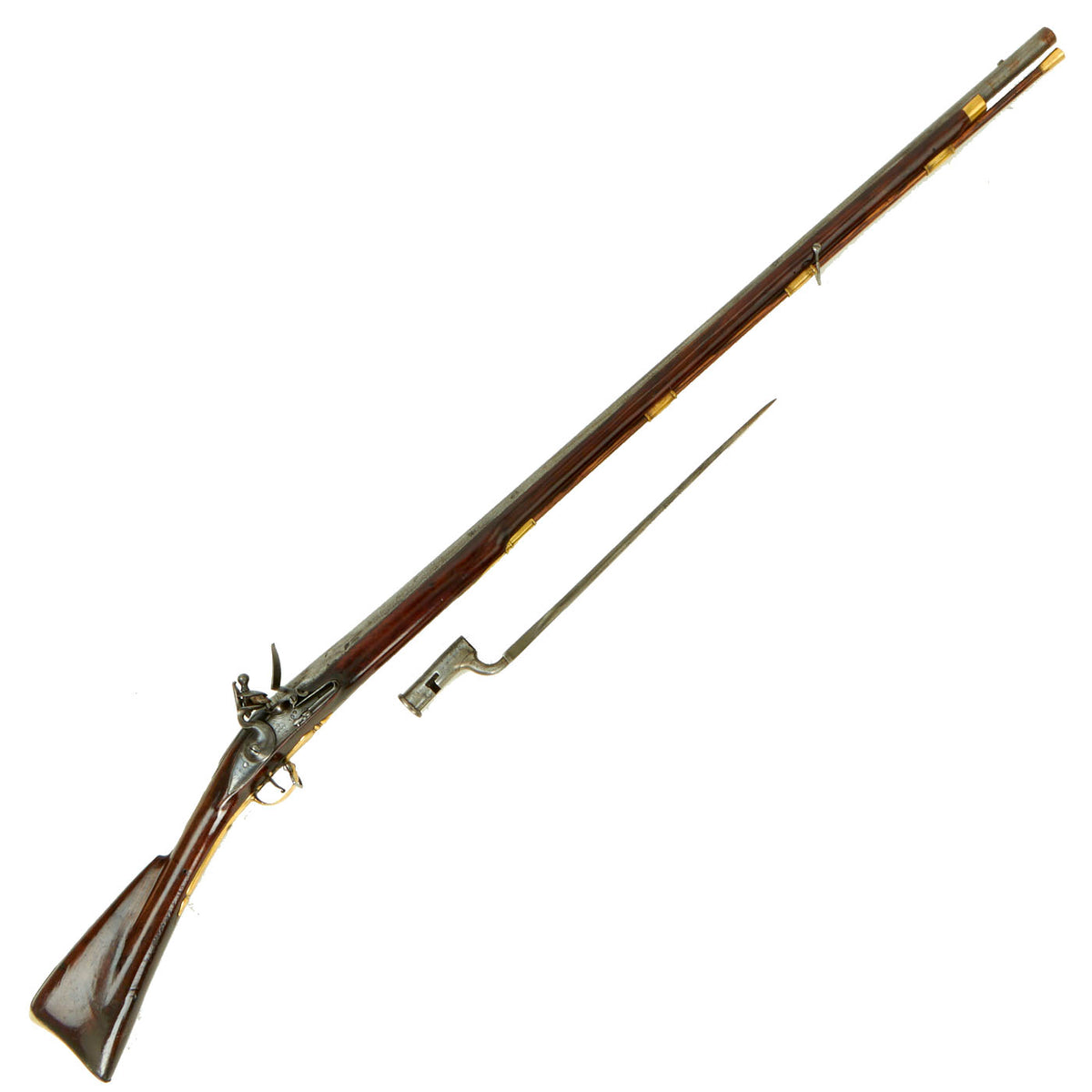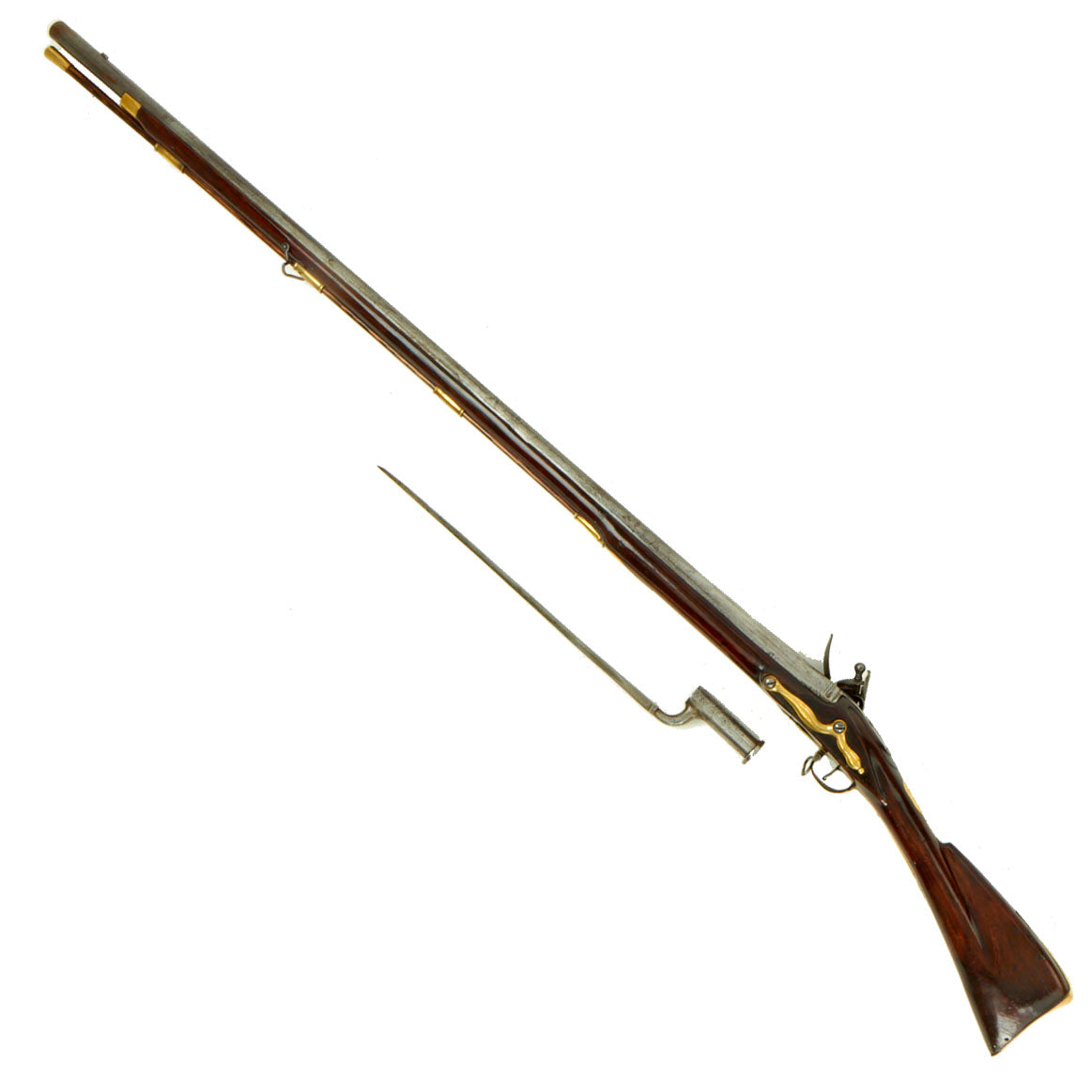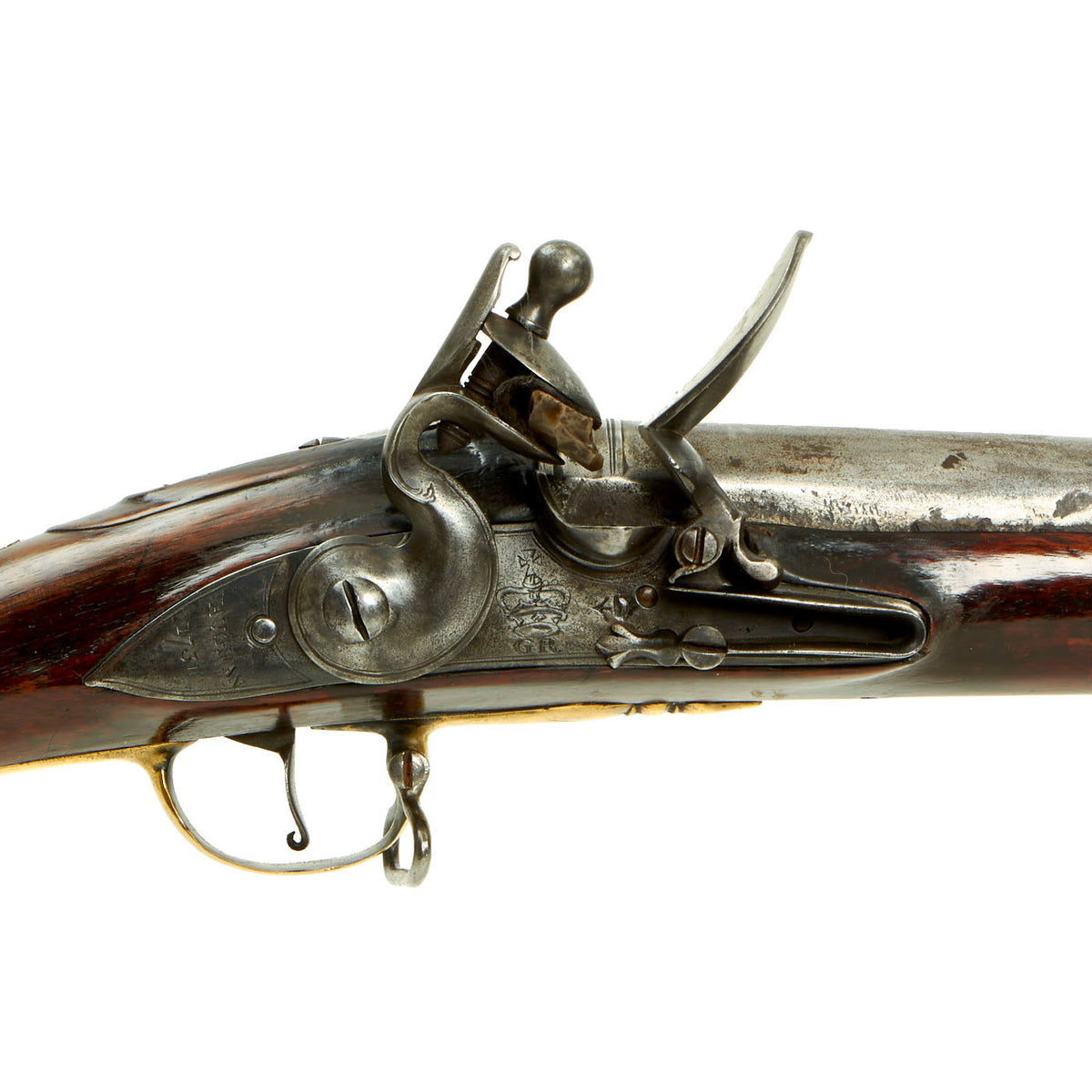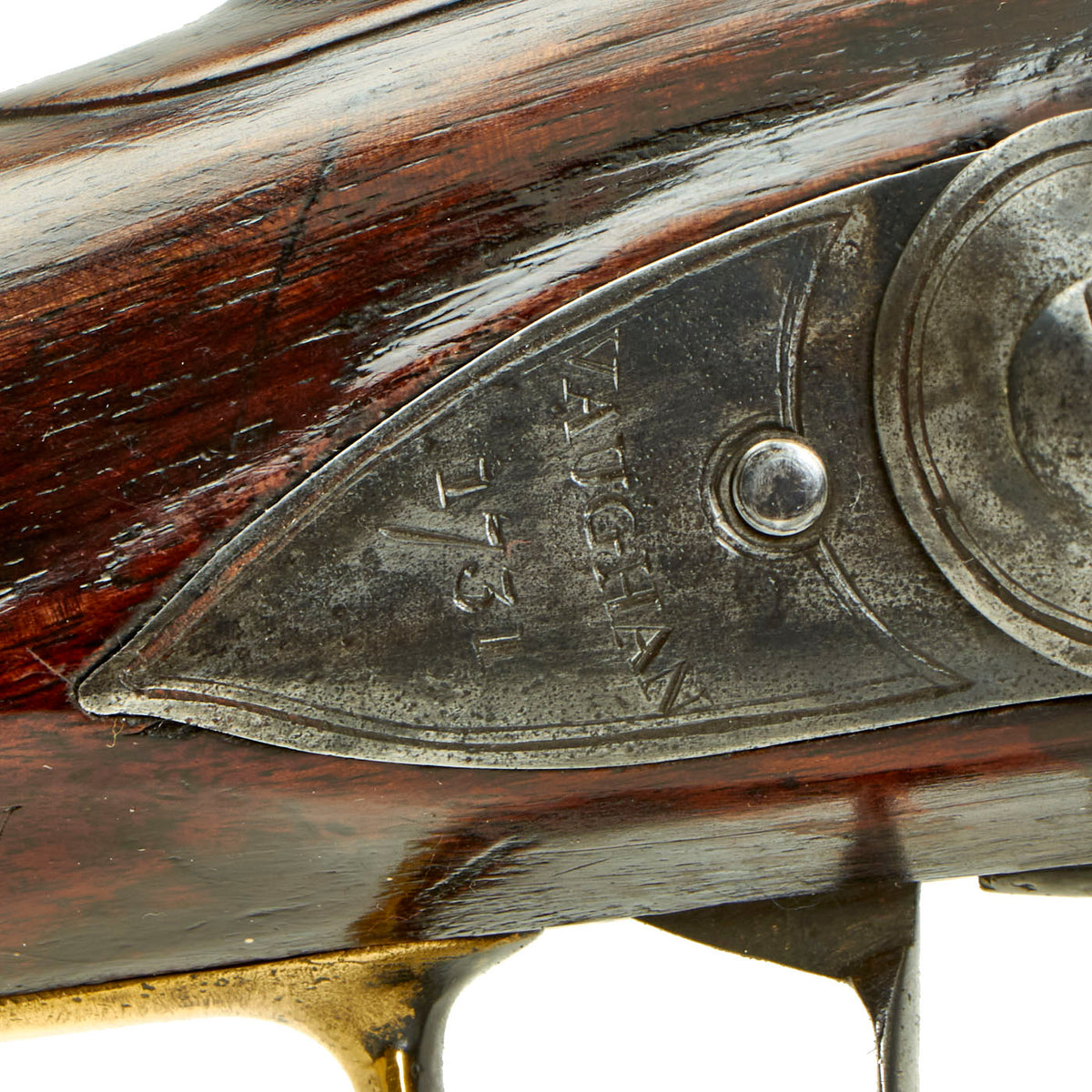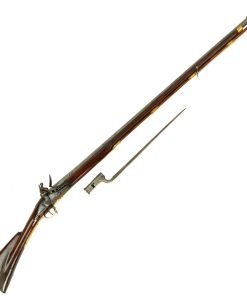Original British Early P1730 Long Land Pattern Brown Bess Flintlock Musket by Vaughan Dated 1731 with Skirted Bottom Bayonet Original Items
$ 59.995,00 $ 14.998,75
Original Item: One of a Kind. This is one of the scarcest early “Long Land Pattern” Brown Bess 46″ barrel muskets to come “out of the attic” in years! And it even comes with the correct early pattern “Skirted Bottom” socket bayonet! Often called the P1730 (Pattern 1730) Brown Bess Musket, this was the very first pattern of Brown Bess, initially known as the “King’s Pattern” musket. There are fewer than 20 known surviving examples in existence today, with the majority of those guns in museums and only a handful to be known in private collections. Known museums examples are:
– 6 at Colonial Williamsburg
– 5 at Museum of Edinburgh
– 1 at Royal Armouries Museum Leeds
– 1 at Valley Forge National Historical Park (Neumann Collection)
– 1 at Fort Ticonderoga (Nitollo collection)
Dated 1731 and manufactured by John Vaughan, examples are known to exist but never actually seen! Please see The Brown Bess: An Identification Guide and Illustrated Study of Britain’s Most Famous Musket by Erik Goldstein and Stuart Mowbray, published 2010, pages 18 to 37, which confirm that VAUGHAN examples have eluded inspection.
It has the correct “banana” shaped lock plate for the period, with a single screw behind the hammer, also period correct. There is no support “bridle” on the flash pan for the frizzen, which was not introduced as standard until later in the 18th century. The lock plate is fully marked with Crown over G.R. mid lock for King George II, with VAUGHAN / 1731 across the tail. There is also the “Lock Viewers Mark” (Crown over Broad Arrow) underneath the frizzen. Action is strong and holds at half cock, firing correctly at full cock.
The musket has a full regulation length 46″ .75″ bore steel barrel, marked on the breech with British proofs, with the top one the CROWN / GR / BROAD ARROW Proof for King George II, who reigned 1727 to 1760. The lower proof is the CROWN / CROSSED SCEPTERS of William Ketland of Birmingham, England, who was so prolific that his marking later became the Birmingham City Proof mark.
Measuring 62 1/2″ in overall length, the musket features all brass furniture, including the protruding rounded side plate with tail. The underside has the correct four ramrod pipes, with a short front pipe, as the longer front pipe was not introduced until 1756. There is a wooden ramrod still held in place, with a very nice brass end cap. The butt plate is faintly engraved with 41, which is most likely a rack number for storage. In outstanding condition with 200 years of dirt having been carefully removed and minor restoration and repairs undertaken. The massive walnut stock shows a few age cracks near the butt plate, as well as some working life repairs along the woodline.
This Musket comes complete with its “skirted bottom” Socket bayonet with 17″ blade and being 21 1/2″ in overall length. It is marked with 94 near the sight channel, with 41 on the other side, matching the number on the musket butt plate. The “skirted bottom” refers to where the blade joins the socket, and was only seen on the very earliest examples of Brown Bess socket bayonets.
A great example of an Early British Long Land Pattern Brown Bess that escaped later modifications. This is a really exciting find from the home of a British Aristocrat and privately purchased over there. A very fine musket, today so hard to find, ready to display!
Specifications (Musket):-
Year of Manufacture: 1731
Caliber: .75″ Musket
Ammunition Type: Lead Ball & Powder
Barrel Length: 46 inches
Overall Length: 62 1/2 inches
Action: Flintlock
Feed System: Muzzle-Loaded
Specifications (Bayonet):-
Blade length: 17″
Blade style: Triangular Socket
Socket Length: 4″
Overall length: 21 1/2″
NOTE: International orders of antique firearms MUST be shipped using UPS WW Services (courier). USPS Priority Mail international will not accept these. International customers should always consult their country’s antique gun laws prior to ordering.
Fast Shipping with Professional Packaging
Thanks to our longstanding association with UPS FedEx DHL, and other major international carriers, we are able to provide a range of shipping options. Our warehouse staff is expertly trained and will wrap your products according to our exact and precise specifications. Prior to shipping, your goods will be thoroughly examined and securely secured. We ship to thousands clients each day across multiple countries. This shows how we're dedicated to be the largest retailer on the internet. Warehouses and distribution centres can be located throughout Europe as well as the USA.
Note: Orders with more than one item will be assigned a processing date depending on the item.
Before shipping before shipping, we'll conduct a thorough inspection of the items you have ordered. Today, the majority of orders will be delivered within 48 hours. The delivery time will be between 3-7 days.
Returns
The stock is dynamic and we cannot completely manage it because multiple stakeholders are involved, including our factory and warehouse. So the actual stock may alter at any time. It's possible that you may not receive your order once the order has been made.
Our policy is valid for a period of 30 days. If you don't receive the product within 30 days, we are not able to issue a refund or an exchange.
You can only return an item if it is unused and in the same state as the day you received it. You must have the item in its original packaging.
Related products
Uncategorized
Uncategorized
Angolan Rebel 1970s era 60mm Inert Display Mortar from Angolan Civil War Original Items
Uncategorized
Armored Burgonet Helmet & Polearm from Scottish Castle Leith Hall Circa 1700 Original Items
Uncategorized
Uncategorized
Uncategorized
Uncategorized
Uncategorized
Uncategorized
Australian WWII Owen MK1 Machine Carbine SMG Custom Fabricated Replica with Sling Original Items
Uncategorized
Uncategorized
Uncategorized
Uncategorized
Uncategorized
